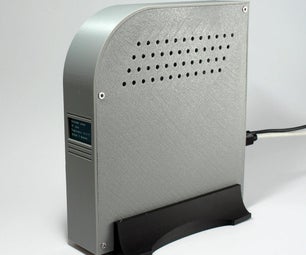Introduction: Bits4Bots - Make a Bridge Rectifier From Diodes
In this project we will build a bridge rectifier.
In short, take AC and turn it into DC.
For most alternative energy applications, we require a direct current (DC) voltage to be generated - for example to charge a bank of batteries. However wind turbines and wave power generators create an alternating current (AC) voltage. This is where the Bridge Rectifier comes in. The AC voltage generated is passed through a circuit of four diodes and emerges converted into the desired DC output.
Newbie special :)
Follow us for more cool projects and visit us at www.bits4bots.com
Step 1: Parts List
- Jumpers
- 4 Diodes (1N4001)
- Load (led, fan, gadget)
- 10 minutes or less
*Blue component represents whatever it is you would like to place in the circuit.
Step 2: AC to DC - Arranging the Diodes
The most common function of a diode is to allow an electric current to pass in one direction (called the diode's forward direction), while blocking current in the opposite direction (the reverse direction).
- Take 4 diodes for example the 1N4007 rectiifer diodes.
- Pick two diodes, make an "L" of their two ends marked with the white bands (cathodes)
- Just as above do it for the remaining two diodes, this time with their ends having no bands (anodes)
- Now you have two sets of diode assemblies. Connect them in a box like the image of the circuit.
Your bridge rectifier is ready. The ends with the bands is the positive, the ends without the bands is the negative and the other two common ends are for the AC input supply.
*Because the input is AC, power and ground does not matter.
Note we have not addressed specific values feel free to adjust the AC input , but I recommend testing the DC voltage out before connecting any device.
Step 3: Test Your Circuit
This was a simple tutorial so hopefully your circuit works fine.
Troubleshoot:
Check that you have the diodes connected and in the proper slots. Check that AC is connected to AC and DC to DC.
Like our project?
Become a Bits4Botter show your support by sharing & subscribing to our YouTube Channel.













